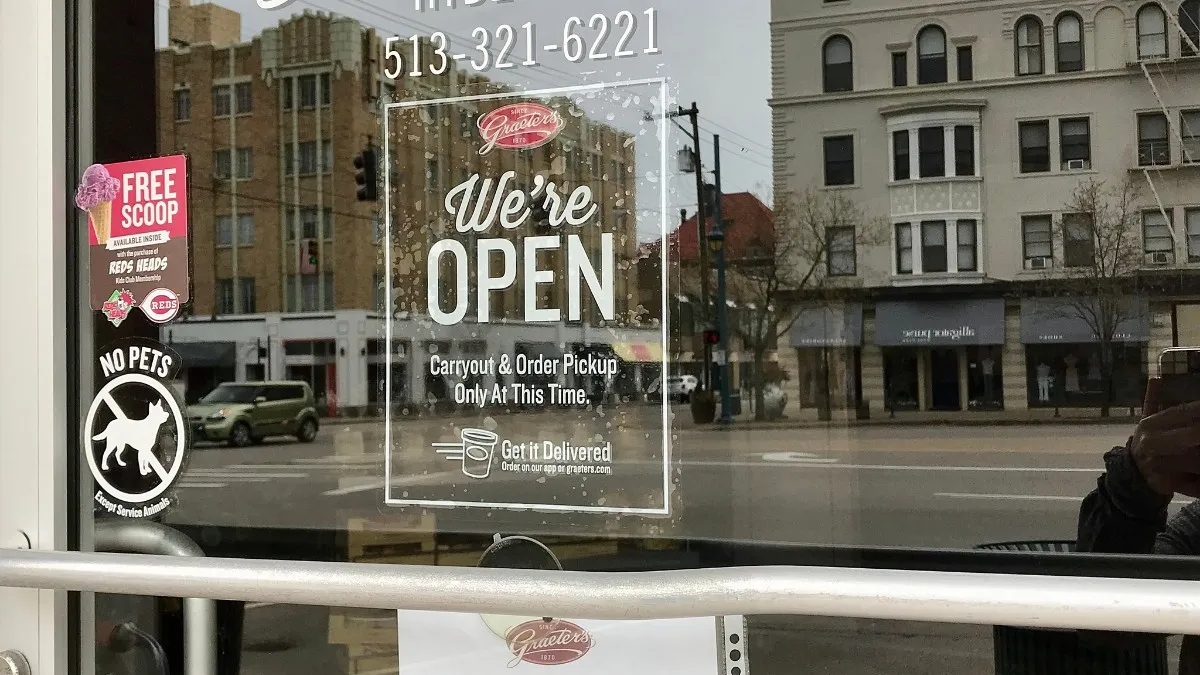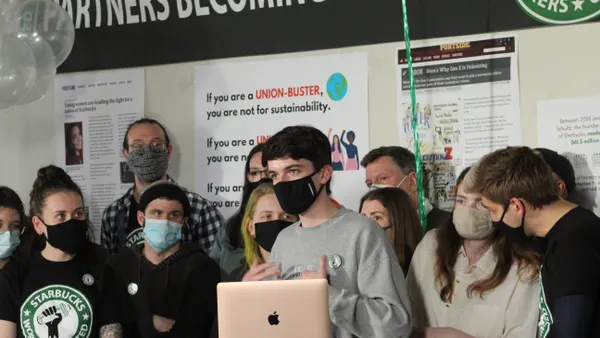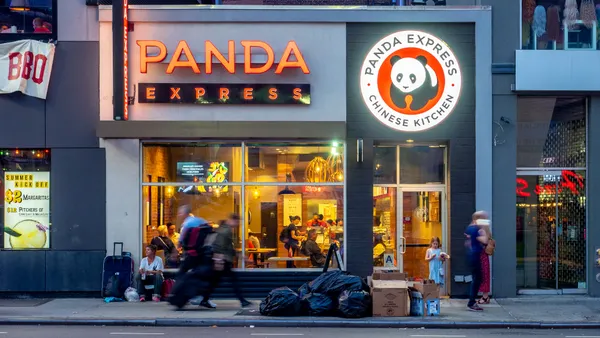Dive Brief:
- Although Texas Greg Abbot Governor gave restaurants the green light to reopen dining rooms on Friday at 25% capacity, about half (47.4%) of the state's restaurants reported they would not open, according to a poll of 401 restaurateurs last week from the Texas Restaurant Association, reported by Restaurant Business. Forty-three percent of restaurants said they would reopen and 9.2% said they were unsure
- Respondents are concerned that they need more time to rehire staff, restock inventory and prepare dining rooms for guests. Fourty-one percent of restaurants reported that they are waiting to open until May 18, which is the second phase of Abbott’s reopening plan, when dining room capacities will be raised to 50%.
- Roughly 30% of the operators with more than one restaurant reported they will reopen their restaurants all at once, while only 12% will reopen location by location.
Dive Insight:
With many states contemplating reopening, the first wave of restaurants to open their dining room doors will be a much-watched event for the industry. Georgia restaurants have been reopen for almost a week now, but many of the same industry concerns have led some operators to keep their dining rooms closed. Over 120 restaurants in Georgia have refused to open over concerns that it’s not yet safe. The same day that dining rooms were allowed to reopen, 1,000 new cases of COVID-19 were reported in Georgia.
Michigan appears to share these concerns. The Governor recently extended dining room closures in the state until May 28. Some critics of her decision in the state have taken to protests and other displays advocating for orders on business closures to be lifted. Protestors rallied at the capital, and some of the participants even held weapons and declared the executive order an infringement on civil liberties.
For many operators, reopening dining rooms isn't as simple as flipping the switch on a neon sign. Roughly 8 million restaurant industry workers lost their jobs as a result of COVID-19 as of April 20, leaving the industry incredibly short staffed. Although some of those workers may be eager to get back to work, some may have found other employment, be satisfied with their unemployment benefits or be unable to work if they contracted the virus.
To mitigate risk for a second wave of the virus, Texas has implemented a number of rules around reopening. Bars must remain closed even if they offer food. Restaurants can only seat six people at a table and parties must be placed six feet from one another. Menus must be disposable, condiments can only served upon request in single-use portions, hand sanitizing stations must be provided at entrances, and buffets cannot be self-service. Valet services are also suspended unless the driver has a handicap placard. Restaurants are also encouraged to have an employee open doors to mitigate the amount of touching that would otherwise occur and surfaces should be disinfected regularly. In rural counties with five or less confirmed cases of COVID-19, restaurants can serve up to 50% capacity.
Even if there are enough workers for Texas's restaurants, questions loom about whether there will be enough food. As the food supply chain copes with continual challenges related to the virus, obtaining ingredients and supplies may not be a simple task. McDonald’s Canada announced last week that it will start sourcing beef from outside the country due to shortages, which is a significant shift from the brand’s marketing platform around Canadian beef. McDonald's U.S. is also priming its supply chain practices for meat supply disruptions.











